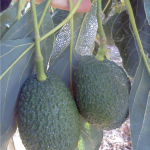Variétés d’avocat noir
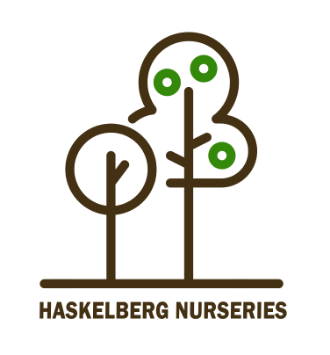
- Haskelberg Nurseries
- 29.03.2021

- Haskelberg Nurseries
- 29.03.2021
-
Naor
- An Israeli variety from the breeding program in the 80s, previously numbered 85-35.
- Productivity: a relatively good and stable crop (can be 25 tons per hectare),
- Fruit size: large (300 to 350) which can be its disadvantage.
- Shape: slightly pear, similar to Fuerte
- Shell: Black
- Picking Date: December-January
- Picking Mode: Manual
- Taste: Good taste, a little sweet
- Additional information: good quality in terms of post-harvest
- Growth Type: Axial, slightly thin, moderate.
- Planting Densities: 6 x 3
- Trees per hectare: 550
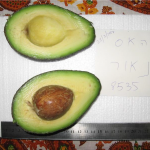
-
Hass
- Originally from California
- Group A, requires a pollinator
- Productivity: Medium
- Fruit size: 180-250 g
- Shape: Pear
- Shell: Has a bumpy, rough black shell, easy to peel
- Picking Date: November to April
- Taste: Considered delicious and buttery
- Plantation maintenance: Under hot climate conditions, the fruit is small and therefore less recommended for planting
- Additional information:. The most common and required variety on the global market.
- Growth Type: vigorous, transverse and high
- Planting Densities: 6/7x 4
- Trees per hectare: 350-420
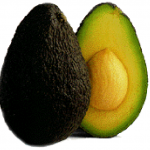
-
Gaia
- Israeli development
- Group A, requires fertilization
- Productivity: Similar to a Hass
- Fruit size:
- Shape: Hass like
- Peel : Peeled easily.
- Picking date: earlier then Haas in a month, from late September to March
- Picking Mode: Manual
- Taste: good internal quality
- Shape ofraiso : medium, lateral and height.
- Planting intervals: 6×4
- Trees per hectare: 420
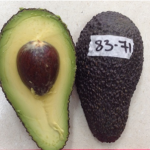
-
Almog
- Israeli development owned by Kibbutz Ein Hamifratz and represented by Haskelberg Nursery
- Group A, requires a pollinator
- Productivity: 60 kg per tree.
- Fruit size: size 280-300 grams.
- Shape: Pear
- Shell: Rough black, average thickness
- Picking date: December – July.
- Taste: Good Quality
- Planting Densities: 6×3
- Trees in Hectare: 550
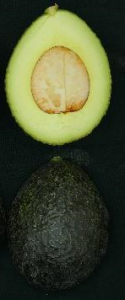
Harvest
-
- Originally from California owned by Westfalia and represented in Israel by Haskelberg Nursery.
- Productivity: very productive and stable in crops
- Fruit size: average size 250 grams
- Shape: Hass like
- Shell: Rough Black
- Taste: Good internal quality if picked on time
- Picking mode: picker
- Additional Information: large leaves, in early years tends to throw flowers in bloom. Very sensitive to low temperatures
- Growth Type: Axial high tree.
- Planting intervals: 6×4
- Plants per Hectare: 420
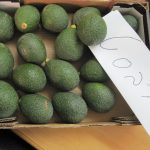
-
Gem
- Originally from California owned by Westfalia and represented in Israel by Haskelberg Nursery.
- Group A, requires a pollinator
- Productivity: very high, stable over the years
- Shape: Round
- Shell: Hard and quite hard, peeled easily
- Picking date: December to February
- Picking mode: picker
- Taste: Excellent taste
- Growing shape: Round and wide
- Additional data: Sensitivity to cold is similar to Hass
- Planting intervals: 6 x 3
- Plants per Hectare: 550
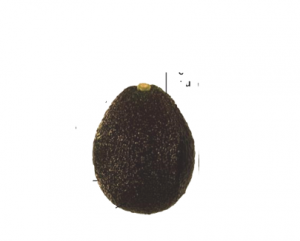
Lamb Hass
-
- Developed inCalifornia
- Group A, requires a pollinator
- Productivity: High
- Shape: Slightly pear
- Shell: rough
- Picking Date: End of Season March- April
- Picking mode: picker
- Plantation maintenance: Can be kept into the summer
- Additional data: requires a correct pruning interface for stable crops. more sensitive to cold then Hass
- Growth Type: Axial, moderate
- Planting intervals: 6×3
- Plants per Hectare: 550
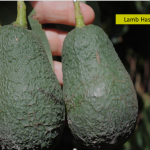
-
Carmen
- Originally from California owned by Westfalia and represented in Israel by Haskelberg Nursery.
- Group A, requires a pollinator
- Fruit size: smaller than the Hass
- Shape: Hass like
- Picking date: It has two picking periods since its « loco » flowering.
- Picking Mode: Manual
- Taste: Fine quality
- Shape of smodge: axial
- Planting intervals: 6×3
- Plants per Hectare: 550
